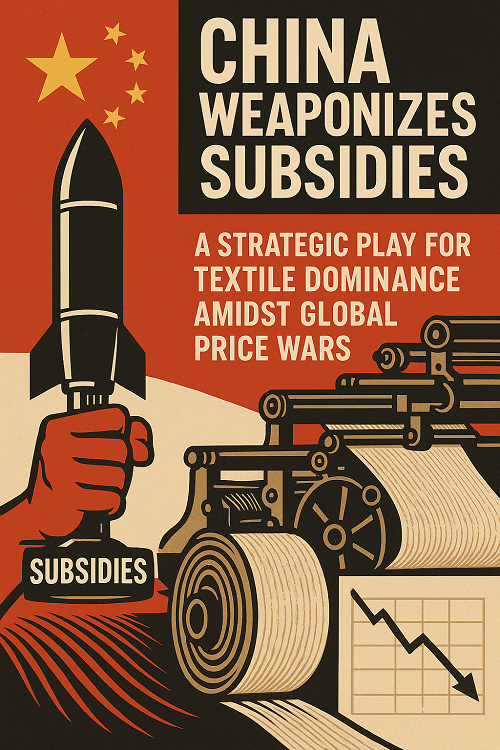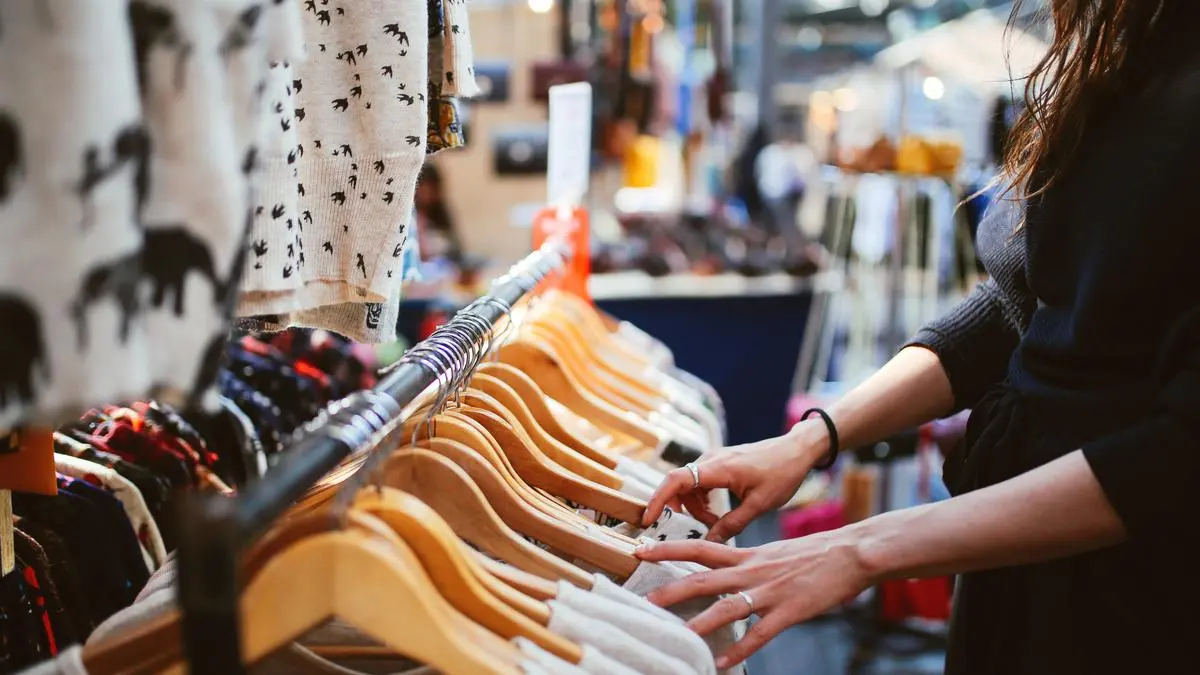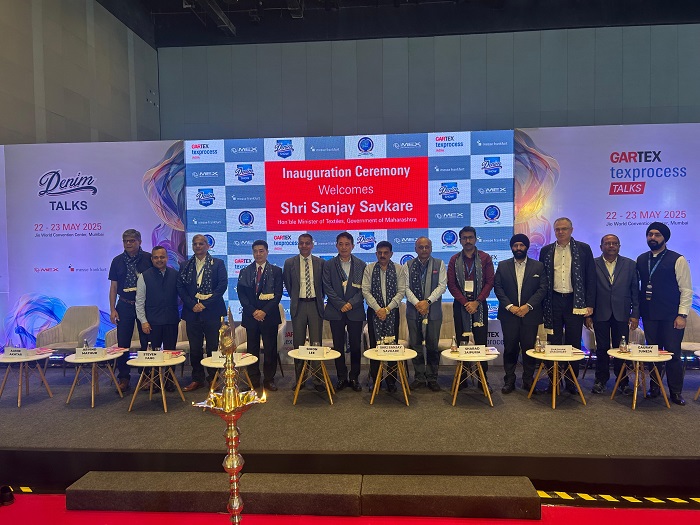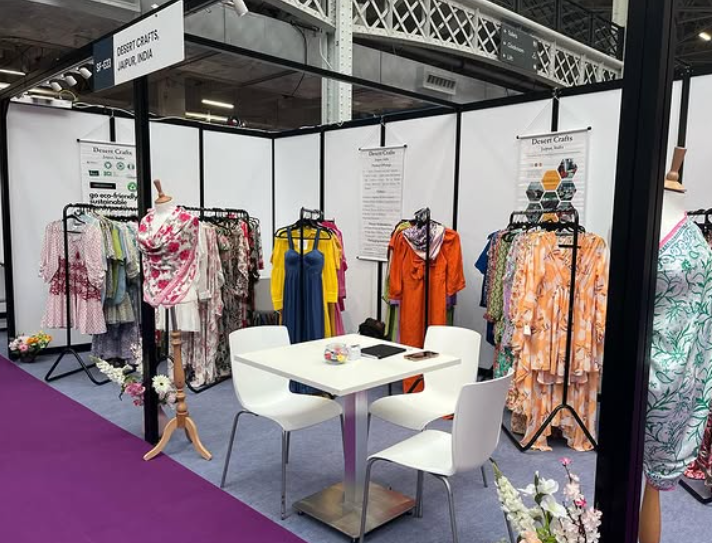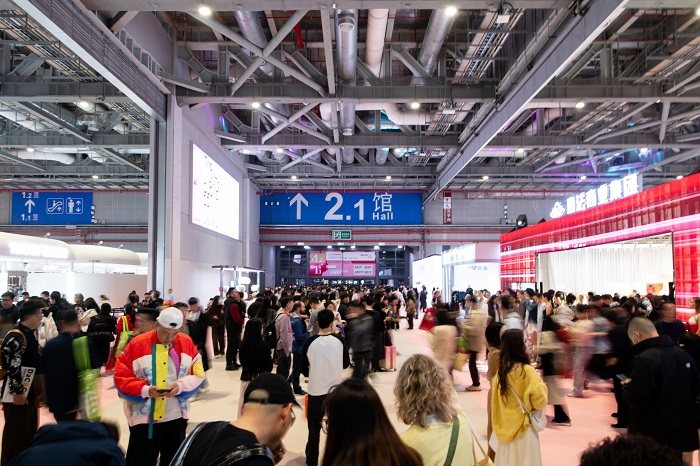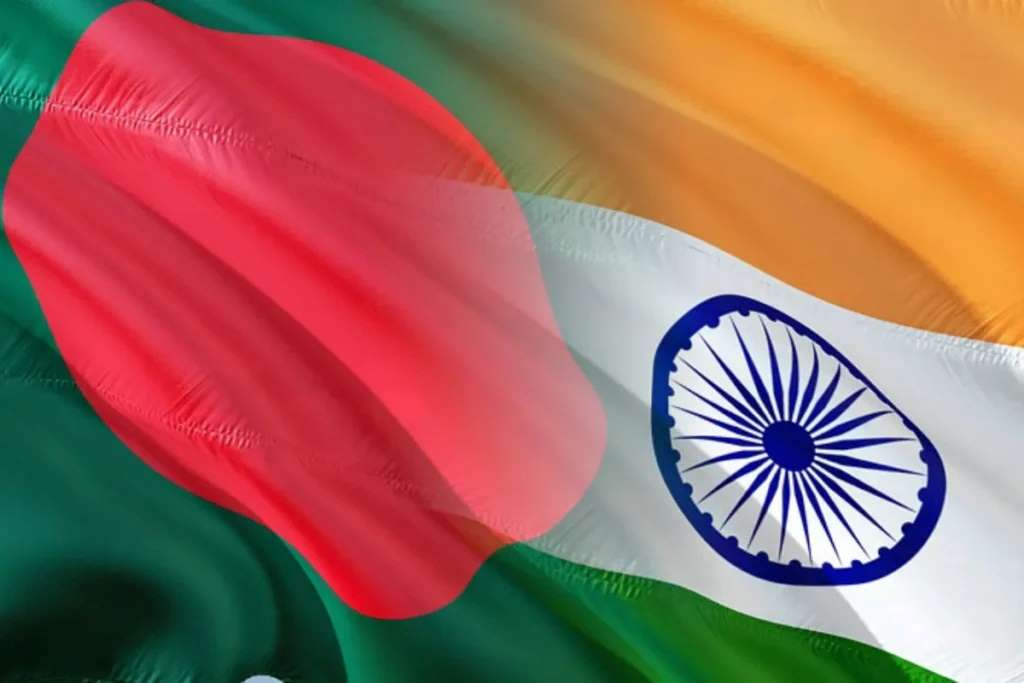
The 15th Heimtextil Russia was held from September 25 to 27 at the IEC Crocus Expo in Moscow, Russia and gathered the key players of the international textile business. This year, a total of 15,117 professional trade visitors witnessed the best collections of textile and wall coverings by 311 companies from 21 countries such as Austria, Bangladesh, Belarus, Germany, Greece, Egypt, India, Spain, China, Moldova, UAE, Pakistan, Poland, Portugal, Russia, USA, Taiwan, Thailand, Turkey, France. The national pavilions of Germany, Spain, Italy, China, Pakistan, Portugal, Turkey participated at the event this year too whereas India and Taiwan pavilions were the new entrants.
Leaders of the home and interior textile industry took part in Heimtextil Russia 2013. The latest collections of international textiles were exhibited by Eke, Hefel, Texathenea, Aydin Orme, Sleepwell Kauffmann, Zorlu, Angelo Carillo & C S.p.A., Welspun Global Brands Ltd, among others. The special show for wallpaper and wall coverings had leading Russian and foreign companies such as KT Exclusive, LeDimore, Art-Master and Pan-El.
Heimtextil Russia makes visiting the exposition maximally effective and convenient for its visitors. This year, the fair presented a new online platform which was available as a mobile application for Android and iOS. Fair visitors could download this application and use it to check the fair exposition and plan their schedule correctly for maximum benefit.
Li Peng Enterprise which makes nylon products, has said that it will become the world’s largest nylon maker after it completes its expansion to increase capacity by 180,000 tonnes of nylon next year. They are adding one more production line, and after the expansion, their capacity will increase to 580,000 tonnes of nylon a year, replacing BASF SE as the world’s largest nylon maker.
Li Peng president Jonathan Lin expects the new production line will contribute to Li Peng’s revenue starting the third quarter next year. Meanwhile, the company is also building a dying and finishing plant in Yangmei, Taoyuan County, enabling it to sell finished fabrics to its clients. Their Japanese clients can purchase fabrics directly from them and ship it to Southeast Asia. Lin forecast that the dying and finishing plant could raise the company’s revenue by NT$10 billion ($340 million) in 2015.
From January through last month, Li Peng posted revenue of NT$19.77 billion, up 0.69 per cent from NT$19.63 billion a year ago, according to the company’s filing to the Taiwan Stock Exchange. During the first six months of the year, the company registered a profit of NT$561.02 million, up from the losses of NT$508.08 million a year ago, when the company suffered from low nylon prices, the filing showed.
Cashmere World 2013, the world’s only trade fair dedicated to cashmere and other fibres was held from September 25-27 at Hong Kong. Co-organized by the China Chamber of Commerce of Import & export of Foodstuffs, Native Produce and Animal by-Products and UBM Asia., the event runs concurrently with Fashion Access, an exhibition dedicated to head-to-toe fashions, enabling both fairs to benefit from each other’s synergy.
More than 60 exhibitors and 2,000 buyers visited the fair. Outsourcing as well as quality, marketing, supply chain and sustainability issues; the advent of new technologies and fashion trends were among the topics debated at the Cashmere World Forum that was held over two days which attracted cashmere industry’s experts and aficionados from all over the world.
There was a lot of buzz around the Afghan Made cashmere booth. Afghanistan is currently the third largest producer of cashmere in the world after China and Mongolia but due to lack of training and equipment, only 30 per cent of the country’s cashmere is currently harvested. Philip Eddleston, Cashmere Specialist and Advisor of AfghanMade, the label developed for and by the US task force project, predicted that Afghan Cashmere will come as an identified product by the end of 2014. Production from Afghanistan is hoped to alleviate the worrying global shortage of raw material, attributed to the reduction of grazing land and of animals raised for their fibres. Meanwhile, despite the much talked about decrease of competitiveness of China, the country is expected to remain the world’s main cashmere manufacturer for the years to come.
Data released by Japan Textile Importers Association reveals that the value of apparel imports made by Japan in August 2013 increased by 21.4 per cent year-on-year to 280,732 million yen. This data is based on the Ministry of Finance trade statistics. August was the fifth consecutive month when Japan’s apparel imports increased both in terms of value and volume. Japan’s garment imports from Asean nations shot up by 45.3 per cent to 41, 681 million yen in August, while volume grew by 19.4 per cent to 50.639 million units. Among Asean countries, Japan’s clothing imports from Cambodia, Thailand, Indonesia and Myanmar showed an increase.
In 2012, Japan’s total clothing imports were valued at US$ 32.073 billion, compared to imports of $31.110 billion and $25.262 billion made in 2011 and 2010 respectively, according to relevant data. China was the largest supplier of apparels to Japan in August with 300.513 million units, almost same as the quantity supplied during the corresponding period of last year. The value of Japan’s apparel imports from China rose by 16.5 per cent to 211,992 million yen, during the month.
Sri Lankan apparel exporters are demanding flexible labour laws and revisions in energy tariffs to facilitate apparel manufacture by lowering cost of production. “Energy costs continue to be a large and increasing part of our industry. We would look at removal of the fuel adjustment charge applicable under the tariffs which most of our members operate. With the commissioning of the coal power plants there is now a valid argument for the removal of this surcharge. Our association has made a number of observations to the Public Utilities Commission (PUC) and we would seek an opportunity to discuss these in detail as we believe there are some fundamental issues in the way the current tariff system is structured,” Sri Lanka Apparel Exporters Association Chairman Yohan Lawrence stated at the association’s recently held AGM.
Lawrence also called for the implementation of incentive schemes for alternative energy generation, particularly in the conversion from furnace oil to biomass boilers. Meanwhile, touching on Sri Lanka’s labour laws, Lawrence called on amendments with a view to allowing factory workers to work longer hours while also allowing factories to run continuous shifts.
“Increased labour market flexibility will be a significant advantage to the industry as this allows us to have 24-hour/seven-day shift operations,” Lawrence noted. Sri Lankan factory workers are allowed a maximum of 57.5 hours in comparison to Bangladesh with 60 hours and Vietnam with 64 hours and a fixed weekly holiday. Continuous shifts may also have positive implications for Sri Lanka’s power grid, which would otherwise see a significant drop in consumption after peak hours.
www.srilanka-apparel.com
Anthropologie is opening its fourth UK store in Guildford next month. Opening on October 21, the five-storey building at 149 High Street in the centre of Guildford, will house women’s fashion, accessories and home decor, including exclusive products such as Mister Finch’s collectable objects of art...Read More
British lifestyle brand Holland & Holland, known for its traditional outdoor sporting attire, has launched its online store in America...Read More
French designer Christian Louboutin is asking a Belgian court to kill a far-right campaign using his iconic stilettos for a poster denouncing Islam, the Belga news agency reported...Read More
 Alessandro Dell’Acqua has been confirmed as the new creative director at Rochas, replacing designer Marco Zanini, who was announced as the new creative director of legendary fashion house Schiaparelli. In a statement by Rochas, they confirmed the arrival of Dell’Acqua as a “new chapter” for the label, while adding that the Italian designer will still be continuing with his own brand, No.21, which showcased its latest collection in Milan. Dell’Acqua’s first collection for Rochas will be presented in Paris in February 2014...Read More
Alessandro Dell’Acqua has been confirmed as the new creative director at Rochas, replacing designer Marco Zanini, who was announced as the new creative director of legendary fashion house Schiaparelli. In a statement by Rochas, they confirmed the arrival of Dell’Acqua as a “new chapter” for the label, while adding that the Italian designer will still be continuing with his own brand, No.21, which showcased its latest collection in Milan. Dell’Acqua’s first collection for Rochas will be presented in Paris in February 2014...Read More
French fashion label Sonia Rykiel has appointed Nathan Levy as managing director in America.
The newly created role, which is part of the brand’s development strategy in the U.S., will see Levy overseeing the commercial management and the implementation of the company’s retail and wholesale activities in the region...Read More


